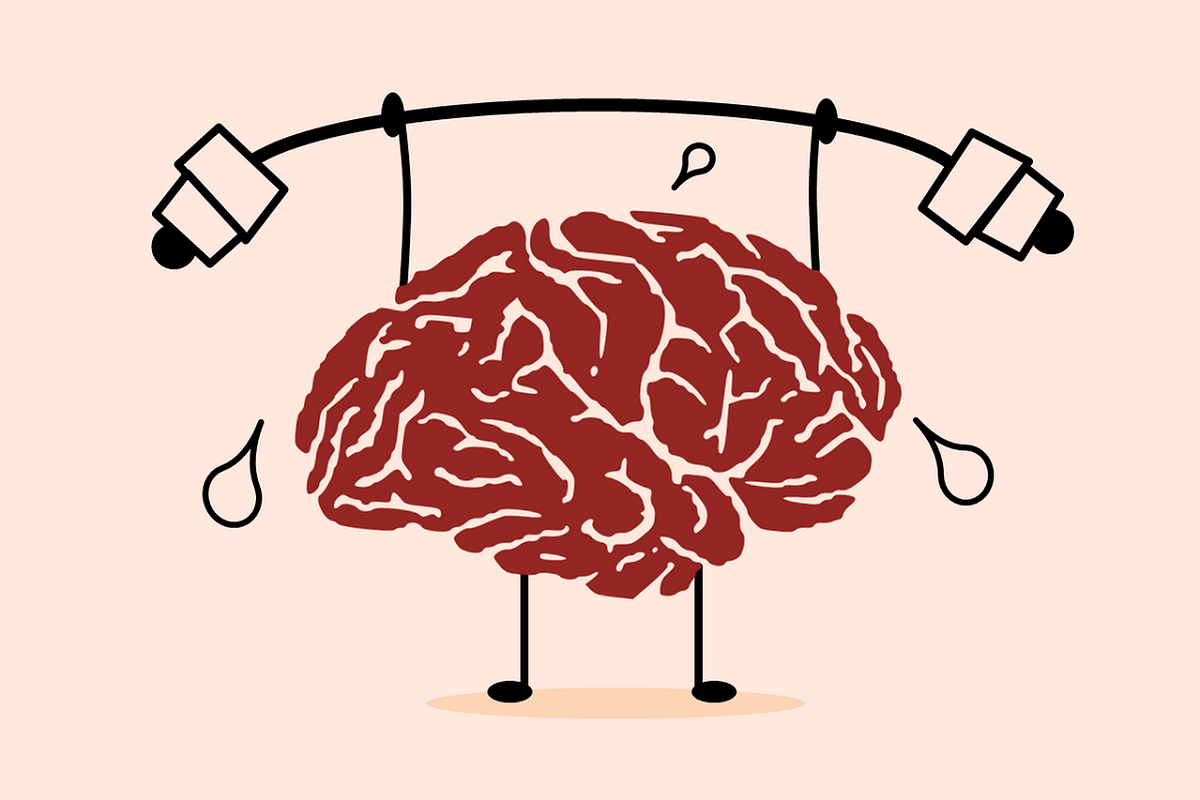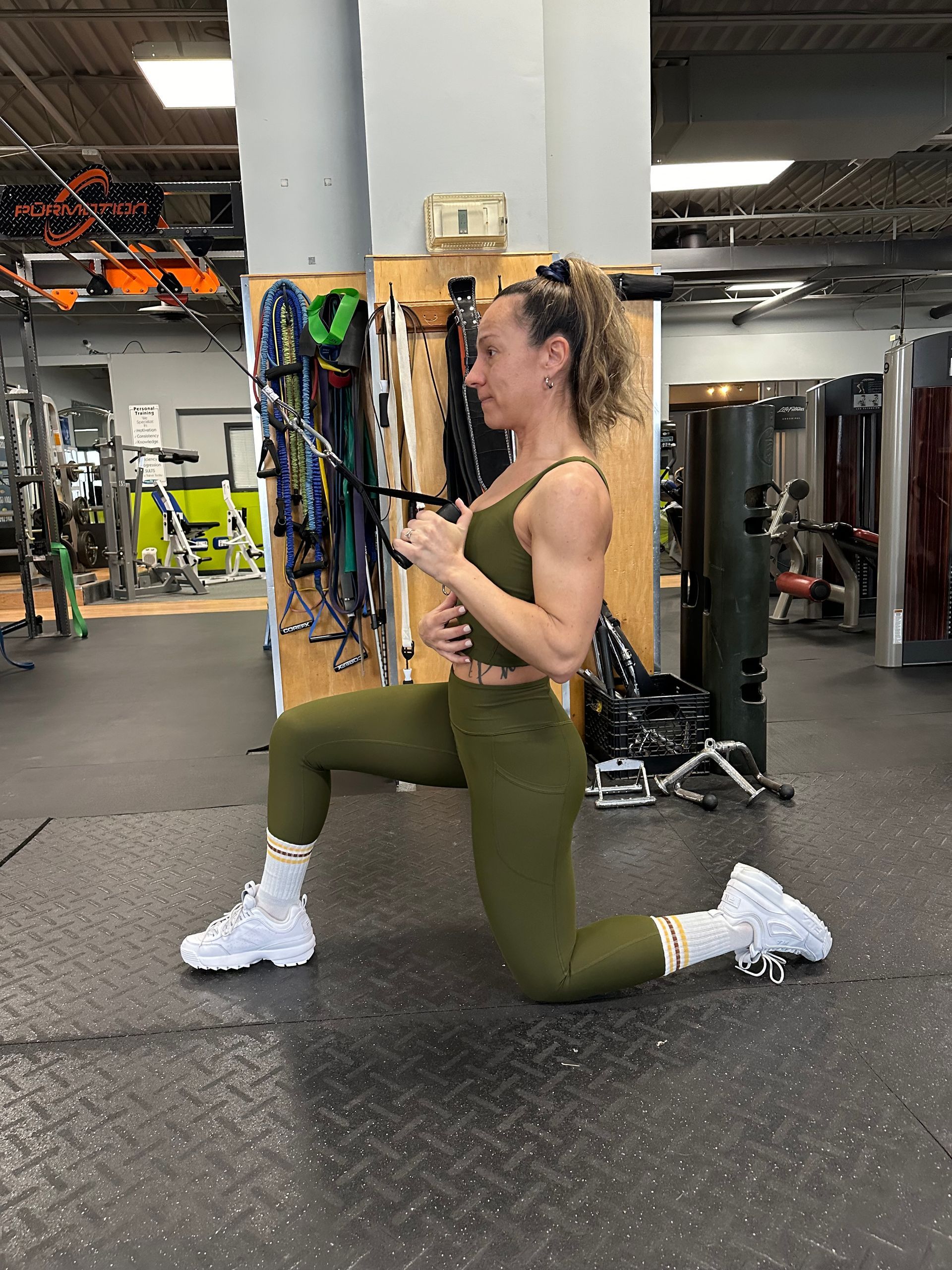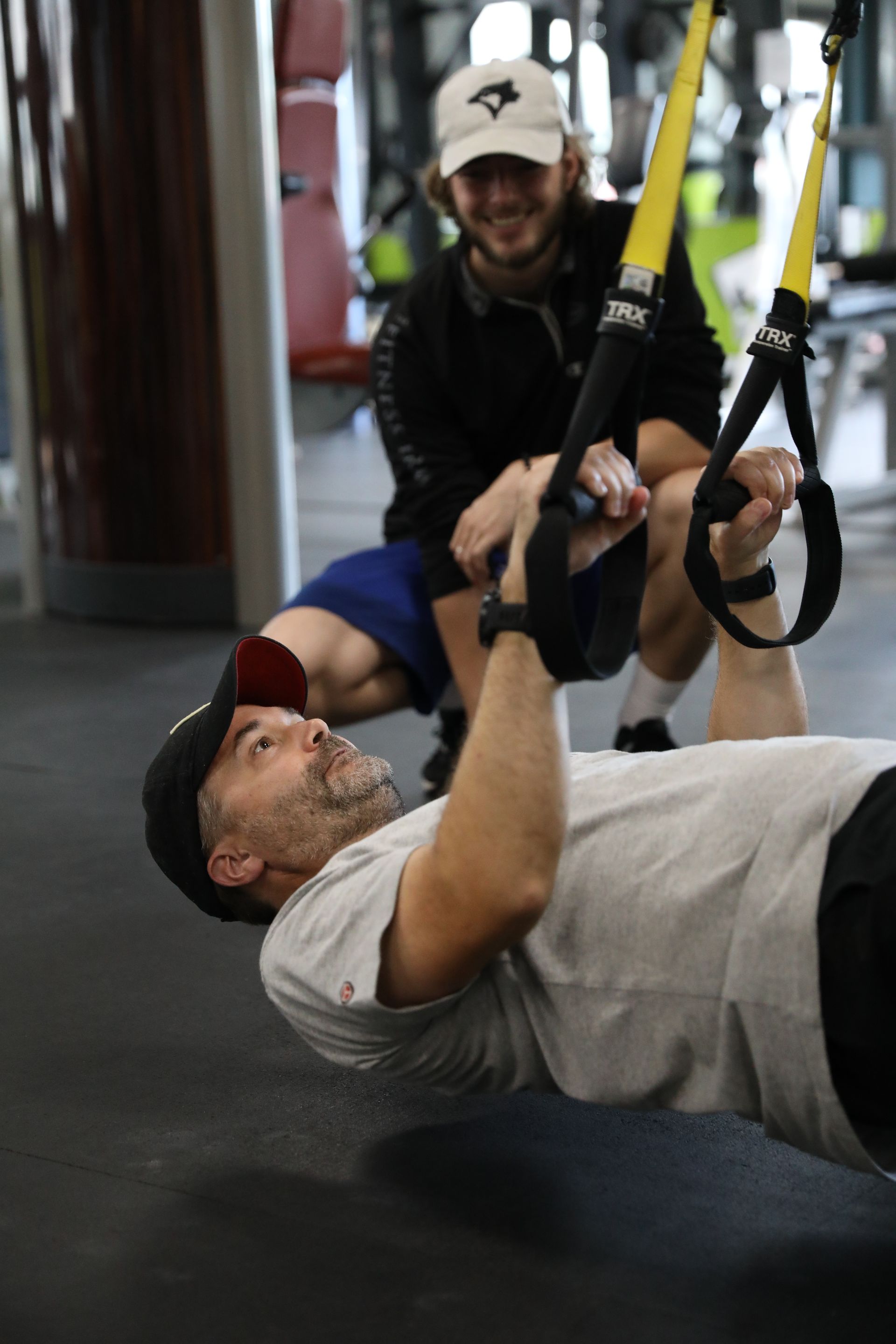Blog Layout
THE ROLE OF FASCIA
Kerri Sherk • November 18, 2020
What is Fascia?
A fascia, plural fasciae, is a densely woven network of connective tissue primarily made up of collagen. It wraps around each and every muscle, bone, nerve, artery, vein and internal organ in our body like a sheet of clingfilm. This keeps our individual parts separate and helps to reduce friction during everyday movement. Fasciae hold our bodies together, connecting our organs to our ribs to our muscles, and our bones to one another. It structures our bodies, balancing stressors and counter-stressors to facilitate mobility, flexibility and resilience.
Why is it important?
Healthy fasciae is relaxed and has the ability to stretch, glide and move without restriction. With physical or emotional trauma, a sedentary lifestyle, inflammation, poor posture, poor sleep quality, dehydration or unhealthy eating habits (or a combination of all the above!), fasciae loses its pliability. This can lead to adhesions and distortions in the fasciae, and restriction in our movement patterns. Myofascial restrictions (‘myo’ meaning ‘muscle’; ‘fascia’ meaning ‘band’) can produce tensile pressures of approximately 2,000 lbs per square inch on pain sensitive structures which will not appear in many of the standard tests. This means many people will continue to live with fascial pain that remains undiagnosed.
How do we look after our fascia?
Maintaining healthy fasciae takes time and dedication. There are a number of ways in which we can ensure our fasciae stays relaxed and flexible. Here are just some of our suggestions.
1. Stay Hydrated
The importance of staying hydrated for fascial health cannot be overstated. Think of your fascia as a sponge. When it’s dry, it becomes inflexible and brittle. With hydration, it becomes malleable and relaxed. Try to drink between half an ounce and an ounce of water for each pound you weigh, daily. For example, if you weigh 180lbs, aim for a minimum of 90-180 ounces (approx. 2,700 – 5,400 ml) of water each day.
2. Stretch
Stretching that lengthens your muscles can help to release tension in the fasciae. Aim to stretch out your muscles for at least 20 minutes per day. This can be done in small increments, such as 2 x 10 minute sessions, or 4 x 5 minute sessions. Hold the stretch for 60-90 seconds, ensuring that you are not causing yourself any pain. The best part is, many stretches can be done from the comfort of your desk if you have a sedentary job. Next time you’re sitting at your desk, why not try a seated piriformis stretch? Or perhaps, a standing hip flexor stretch? Small changes can go a long way!
3. Myofascial release
There are a number of ways in which you can self-release tension in your fasciae. Roll out a tight spot using a foam roller, or a tennis ball for those more stubborn areas! Apply pressure on the tight area for 30-60 seconds, until the tension dissipates. For particularly stubborn muscles, you may want to consider the use of a professional. Luckily, we have an excellent Registered Massage Therapist, Matt Banks, who can aid in the release of stubborn areas via Active Release Therapy. Click here to learn more about Matt.
4. Try Yoga
Practicing yoga is an excellent way to ensure you are gently stretching your muscles whilst also improving balance and strength. This can help to keep fasciae supple and flexible. Finding some time for yoga also has beneficial consequences for your mental health, such as lower stress and anxiety levels. Why not try one of our many yoga classes here at The Fitness Firm? Click here to view our updated Group Fitness schedule.
5. Assess your mobility with our Personal Trainer, Kwesi Millington
Keeping active and mobile are key in maintaining healthy fasciae. If you’re not sure about your current fitness and mobility levels, a Starter Plan with our trainer, Kwesi Millington, will help to put you on the right track.
During the Starter Plan, Kwesi runs through something called a ‘Functional Movement Screen’. The Functional Movement Screen is comprised of 7 movements that test a person’s balance, mobility and stability. When the results of the screen are analyzed by a certified facilitator (such as Kwesi), you as the client will learn what exercises should be avoided, and what should be included in a program – think of it as preventative maintenance. Placing exercise and performance on top of dysfunctional movement can impair performance and cause injury, which is exactly what we want to prevent. By booking a Starter Plan, you are ensuring that you start your fitness journey with a baseline that you and your trainer can use to move with purpose, on purpose, and without pain or injury.

By Nicole Fazio
•
September 29, 2021
Are you struggling to stay consistent with your fitness and nutritional goals? Being consistent is crucial to making long term lifestyle changes, but it is one of the biggest challenges we all face. Here are 5 strategies to help you find consistency: 1. BE REALISTIC Change takes time . There is no fast way to make lifestyle changes, so it’s imperative to make goals that make sense for you. The more attainable and realistic the goal, the more likely the goal can be accomplished. When goals and milestones are accomplished, it gives you a sense of reward and enhances your self-efficacy (i.e., the belief that you can accomplish your goals). On the other hand, if the goal we have set in place for ourselves is too difficult, it may lead to demotivation and lower self-esteem. If you want sustainable and lasting results, being realistic is the first step. 2. HAVE CLEAR GOALS Not having clear goals is like driving to a new destination without a map. Goals are important in leading us in the right direction. Goals provide you with the motivation to push yourself to work towards chane. Implementing S.M.A.R.T goals is a good place to start. S - Specific M - Measurable A - Attainable R - Relevant T - Time-Bound When setting goals, make sure to include both short term and long term goals . Short term goals help with commitment and determination by allowing you to celebrate small wins more frequently that contribute to the bigger goal in place. Long term goals give you something to focus on and strive for in the bigger picture and help focus on where you want to be in relation to where you are now. For example, you decide that you want to “Lose 5 lbs in 6 weeks.” This goal is specific, measurable, attainable, relevant, and time-bound. However, this creates the need to make smaller goals to help you get there. Just doing what you are now, unchanged, will likely not get you to your goal. For instance, you might state that you will “Lose 5lb in 6 weeks” by incorporating 1-2 servings of vegetables into every meal, by limiting take-out meals to once per week, exercising for 45 minutes 3 times per week, and going for a 30-minute walk with your dog every day. If you achieve these smaller rules/goals, you’ll be well on your way to reaching the big one. 3. CREATE A ROUTINE AND HAVE A PLAN Fail to plan and plan to fail! Having a game plan for the week ahead will help adhere to your goals, as there is less opportunity for impulsive behaviours. This may mean planning out your workouts for the week, meal prepping, and making a grocery list of healthy and balanced foods. In regards to exercise, scheduling in your workouts, and knowing what you're doing when and where, will take the stress off not knowing what to do and "winging" a sub-par workout. In turn, you will be more likely to follow through until your goal is reached. Building on these habits will make it easier to stay consistent with your goals. Stay organized! In addition, it is always a good idea to have a plan ready in case you fall into relapse. The biggest fallback for people creating healthy habits is that once you miss a workout, you eat dessert when you know you shouldn’t have, or if life just gets in the way… You say “oh well” and keep venturing down the wrong path rather than steering yourself back onto the right one. Having a plan in place in case this happens is crucial for helping with motivation post-relapse. 4. ENJOY WHAT YOU'RE DOING It is much easier to be consistent with exercise and nutrition when you enjoy what you're doing and eating. Exercise will be less of an obligation and you will be more excited to get moving. If you’re feeling stuck doing something you don't enjoy, try something new! Whether it be a new exercise class (HIIT, Spin, Yoga, Pilates etc.), getting outside, or joining a club/team. Bottom line is, you cannot be consistent if you dislike what you're doing. In regards to nutrition, implementing foods you don't enjoy will be doing yourself a disservice. Incorporating a variety of foods and flavours you love that also align with your goals is important in having a healthy attitude about food and staying consistent with your nutritional habits. 5. TRACK YOUR PROGRESS Seeing progress in yourself fuels motivation . There are several ways to track your progress: Monitor body measurements How your clothes fit Scale weight or body fat % Lifting heavier weight or doing more reps Check blood pressure Progress pictures How fast you catch your breath after you lose it Activities of daily living get easier to complete Energy levels improve Sleep gets better Tracking progress is essential to staying consistent. People get addicted to seeing results, which creates more and more motivation. When results aren’t achieved, it creates a sense of self-doubt, which reduces motivation because why would you continue if you aren’t getting any better? Even though you definitely should continue because exercise has so many benefits for you beyond the physical changes (bone, heart, emotional, cognitive health, etc.), it is still encouraging to see results and know you’re doing well. Need help with staying consistent? We have a team of friendly and well-educated personal trainers and health practitioners here at The Firm. Our mission is to educate and motivate you into living your healthiest and happiest life - even if it is just to get you started on your fitness journey. We are here to help you.

By Kerri Sherk
•
September 15, 2021
Dear valued members, The COVID-19 situation is continuing to develop in light of the Delta-variant. As such, the Government of Ontario has implemented COVID Vaccination Passports , which will affect the usage of facilities used for sports and fitness activities and personal training, including gyms. The Government of Ontario's website news release states that "Requiring proof of vaccination in these settings reduces risk and is an important step to encourage every last eligible Ontarian to get their shot, which is critical to protecting the province’s hospital capacity, while also supporting businesses with the tools they need to keep customers safe, stay open and minimize disruptions." We are striving to protect our members and our staff in these uncertain times, which means that starting on September 22nd, 2021, be prepared to show proof of full vaccination to be able to enter the gym. Starting at 12:01 am on the 22nd, those individuals who have not provided proof of vaccination will not be given access. Given the controversial nature of this mandate to some people, we want to remind everyone that this mandate is the same as the mask mandate - it was created by the government . Our staff, management included, can't and won't make exceptions to this policy, and we ask that members show the same patience, kindness, and respect that we have received thus far. In order to prevent a bottleneck on September 22, we will be allowing members to bring in their vaccination records during desk hours starting on Monday, September 13th. We will be requiring members to provide us with a photocopy or electronic copy of their vaccination receipts, which we will keep on file. When dropping the proof of full vaccination off at the front desk, we will also be taking your profile picture for our system. Non-Vaccinated Members If you are unable to show proof of full vaccination (2 doses + 14 days) by September 22, 2021, your fob will be rendered inactive. For those that have short-term memberships with an expiration date, your membership will expire. If required, we will give members a maximum of one-month extension on their expiration date if you need extra time to get fully vaccinated. For those that have a perpetual membership , you have the option to hold your membership at $5/month until you're able to provide full proof of vaccination. * Please email us if you require these accommodations with your request because these will not be done automatically. For members with a medical exemption to the vaccine mandate, we will require a copy of a written exemption letter from a Medical Doctor stating that you are exempt from receiving the COVID-19 Vaccine. We do not allow religious exemptions; letters from spiritual healers, chiropractors, nutritionists/dietitians; or self-claiming exemptions, etc. Reminders Let's keep the Aldershot community safe by following COVID-19 Protocols when not at home. Wear a mask when indoors in public Don't leave the house if you are experiencing COVID-19 symptoms Social distance when possible Sanitize your hands consistently, with soap and warm water Get vaccinated as soon as you can! When at The Fitness Firm... Keep your mask on at all times when on the main floor (yes, even when staff aren't here!) Maintain distance when possible Put all your equipment, weights, and plates back on the racks when you are finished with them Sanitize everything you touch after you use it Under no circumstances are you allowed to let individuals/friends into the facility who do not have a gym membership In the event of any falsified documents being discovered, the individual falsifying documents will be banned from The Fitness Firm until the COVID-19 pandemic is declared over (or longer). This is a criminal act under the Government of Canada's Criminal Code . Thank you Please note that these policies from the government are constantly evolving. This is all the information we have available currently, and these may change between now and the 22nd. Fitness is an essential component of peoples' lives, and it's moments like these where our purpose and values regarding the health of our members and staff matter a lot to our community and the individuals we serve. Thank you for your patience and respect for our decisions as we navigate this new government-required policy. Best, Fitness Firm Staff
Think you can add something to our team?
Send us your resume using the button below!
NOMINATE A MEMBER FOR MEMBER OF THE MONTH
Sign up to our newsletter
Thank you for contacting us.
We will get back to you as soon as possible
We will get back to you as soon as possible
Oops, there was an error sending your message.
Please try again later
Please try again later
© 2025
All Rights Reserved | The Fitness Firm








